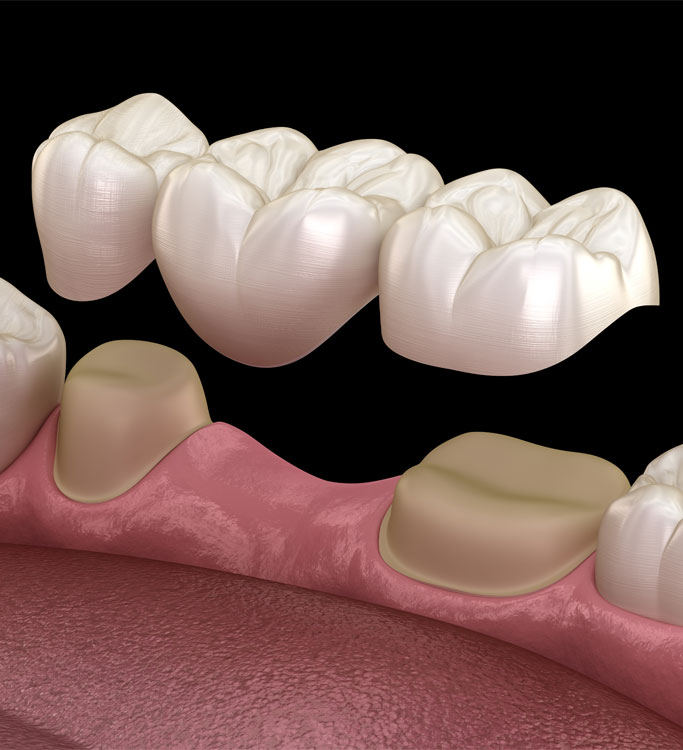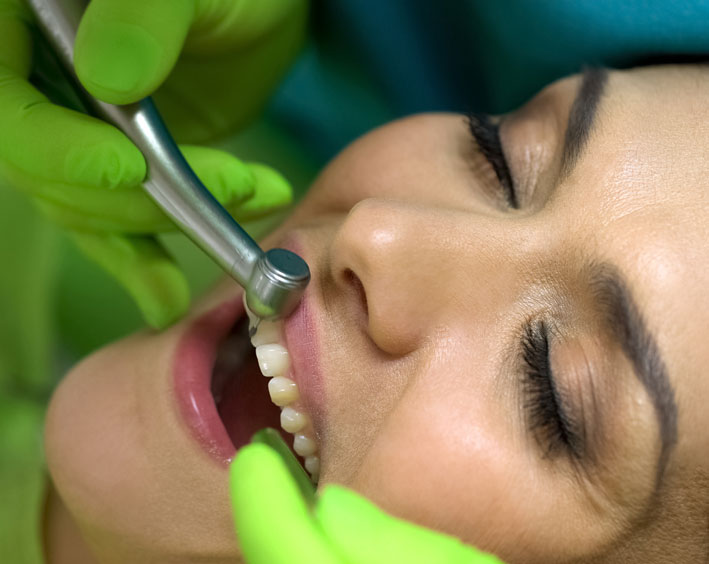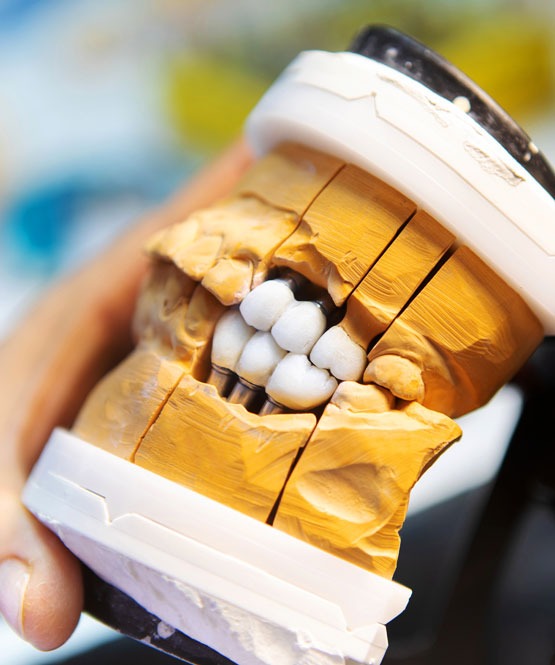Bridges

Bridges
Dental Bridges are a fixed restorative crowns splinted together. Usually it is a good option to replace a missing tooth where the two adjacent teeth are utilized as anchors. Bridges can be made of the same material as crowns, as gold, porcelain fused to metal or porcelain: completely metal free bridges.
Victorian Dental upgrades all most bridges to metal free bridges at no extra cost. Bridges literally bridge gaps between teeth by filling them with strong natural looking artificial teeth. Bridges can also be supported by implants in cases that several teeth are missing where the implants are used as anchors.
Victorian Dental offers the ability to upgrade most bridges to metal free bridges at no extra cost. Bridges physically bridge the gaps between teeth by filling them with strong natural looking artificial teeth. Bridges can be supported by implants in cases that several teeth are missing where the implants are used as anchors.
Why a Bridge?
Spaces left by missing teeth affect the rest of your teeth. These gaps can cause chewing problems. If even one tooth is missing, other teeth may slowly shift out of place. This changes the way your teeth fit together. A poor bite may make your jaw sore. Your teeth may become harder to clean, leading to tooth decay and gum disease. And shifting teeth may change your smile.
In addition to bridges, Victorian Dental can provide you with excellent dental implants that simulate the function and appearance of your natural teeth.
Bridge Dentistry Video
Case selection and treatment planning
When a single tooth requires a crown, the prosthetic crown will in most instances rest upon whatever tooth structure was originally supporting the crown of the natural tooth. However, when restoring an edentulous area with a bridge, the bridge is almost always restoring more teeth than there are root structures to support. For instance, in the photo at right, the 5-unit bridge will only be supported on three abutment teeth.
To determine whether or not the abutment teeth can support a bridge without failure from lack of support from remaining root structures, the dentist employs Ante’s rule—which states that the roots of abutment teeth must have a combined surface area in three dimensions that is more than that of the missing root structures of the teeth replaced with a bridge. When the situation yields a poor prognosis for proper support, double abutments may be required to properly conform to Ante’s rule.
When a posterior tooth intended for an abutment tooth already possesses an intracoronal restoration, it might be better to make that bridge abutment into an inlay or an onlay, instead of a crown. However, this may concentrate the torque of the masticatory forces onto a less enveloping restoration, thus making the bridge more prone to failure.
In some situations, a cantilever bridge may be constructed to restore an edentulous area that only has adequate teeth for abutments either mesally or distally. This must also conform to Ante’s rule but, because there are only abutments on one side, a modification to the rule must be applied, and these bridges possess double abutments in the majority of cases, and the occlusal surface area of the pontic is generally decreased by making the pontic smaller than the original tooth.

Tooth preparation
As with preparations for single-unit crowns, the preparations for multiple-unit bridges must also possess proper taper to facilitate the insertion of the prosthesis onto the teeth. However, there is an added dimension when it comes to bridges, because the bridge must be able to fit onto the abutment teeth simultaneously. Thus, the taper of the abutment teeth must match, to properly seat the bridge. This is known as requiring parallelism among the abutments.
When this is not possible, due to severe tipping of one of more of the abutments, for example, an attachment may be useful, as in the photo at right, so that one of the abutments may be cemented first, and the other abutment, attached to the pontic, can then be inserted, with an arm on the pontic slipping into a groove on the cemented crown to achieve a span across the edentulous area.

Restoration fabrications
As with single-unit crowns, bridges may be fabricated using the lost-wax technique if the restoration is to be either a multiple-unit FGC or PFM. Another fabrication technique is to use CAD/CAM, or CEREC software to machine the bridge. As mentioned above, there are special considerations when preparing for a multiple-unit restoration in that the relationship between the two, or more abutments must be maintained in the restoration. There must be proper parallelism for the bridge to seat properly on the margins.
If the bridge does not seat, the dentist must determine whether or not it is because of the spatial relationship of the two or more abutments, or if it is the abutments that do not fit the preparations. The only way to determine this is to section the bridge, and try in each abutment by itself. If they all fit individually, it must have simply been that the spatial relationship was incorrect, and the abutment that was sectioned from the pontic must now be reattached to the pontic according to the newly confirmed spatial relationship. This is accomplished with a solder index.
The proximal surfaces of the sectioned units (that is, the adjacent surfaces of the metal at the cut) are roughened and the relationship is preserved with a material that will hold on to both sides, such as GC pattern resin. With the two bridge abutments individually seated on their prepared abutment teeth, the resin is applied to the location of the sectioning to re-establish a proper spatial relationship between the two pieces. This can then be sent to the lab where the two pieces will be soldered together and returned for another try-in or final cementation.
